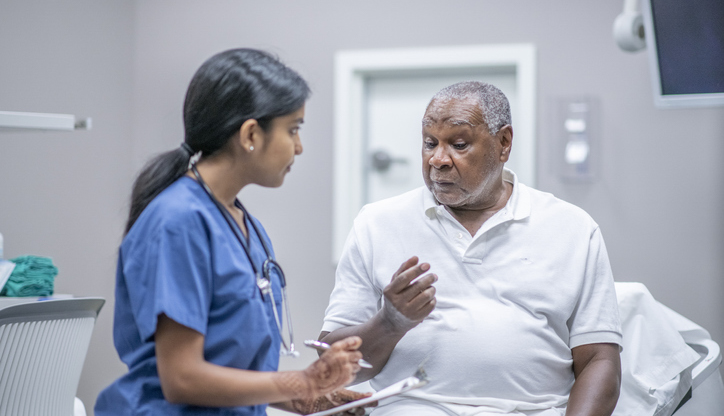
Improving Representation of Racial and Ethnic Minorities in Lung Cancer Screening Programs
With recent screening guidelines changes, more people are eligible for a low-dose CT scan and have the ability to participate in lung screening programs or trials.
While that may be the case for some, there are still high-risk populations that are often overlooked. These populations are the minority community, where they face multiple barriers such as access to care, cost and lack of understanding. These barriers are what create disparities in lung cancer outcomes.
Tiffany Gilliard, a research coordinator in the Cancer Epidemiology Department at Moffitt Cancer Center, is hoping to change that dynamic through her recent study looking at methods to improve the representation of racial and ethnic minorities in lung cancer screening programs.
The study, which was presented at the American Association of Cancer Research annual meeting, looked at the different recruitment methods used to retain minority participation.
“This study was a good opportunity to look at different disparities and what is limiting central access to these other groups that are also at a considerable risk for lung cancer,” said Gilliard.
In her findings, Gilliard identified one of the main causes for low minority participation in screening programs was the lack of teaching.
“In talks with community members it was noted that there was a lack of understanding, they didn’t understand the need for a screening or why this was relevant to them,” she said.
The research team analyzed 525 studies that reported methods for recruitment of racial and ethnic minorities into lung screening programs, which involved 291,329 patients. The findings were that direct mail was a more effective method in recruiting the minority population.
Gilliard says that the key points in her study are looking at priorities that are required to improve recruitment of racial and ethnic minorities in lung cancer screenings, and also understanding that there is a need to develop more culturally relevant screening interventions for minority patients.
“I’m using this study to hopefully improve our rates of different racial and ethnic groups, and that’s what makes it important,” Gilliard said. “There’s not one group that is necessarily majorly impacted, but there are multiple groups that have different risk factors.”
This work highlights priorities and next steps required to improve recruitment of racial and ethnic minorities in lung cancer screening. There is a need to develop culturally relevant lung cancer screening interventions for Hispanics/Latino patients and to create targeted intervention for African American patients.
Lung cancer screening could save your patient’s life. If you’d like to refer a patient to the Lung Cancer Screening Program at Moffitt Cancer Center, complete our online form or contacting a physician liaison for assistance.
We offer a full range of lung cancer screening services in three convenient locations and in many cases, we can schedule an appointment within a few days of receiving a new patient referral. As part of our efforts to shorten referral times as much as possible, online referrals are typically responded to within 24 - 48 hours.
